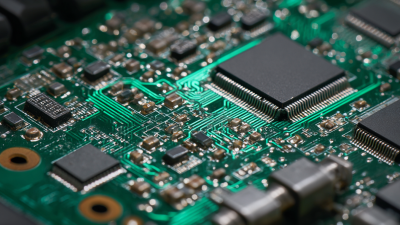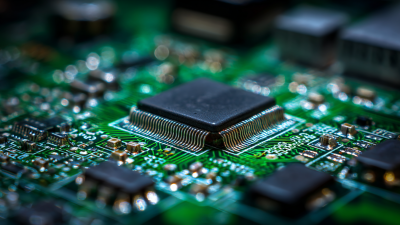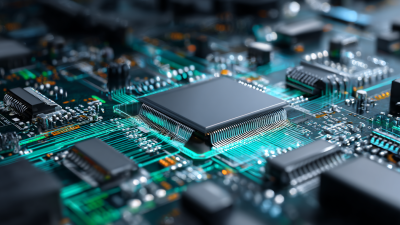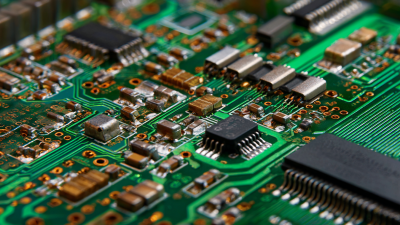Top 10 Printed PCB Board Insights: Trends, Market Value & Manufacturing Innovations in 2023
In the rapidly evolving landscape of electronics, the printed PCB board plays a pivotal role in driving innovation and enhancing functionality across a myriad of applications. As we navigate through 2023, the industry witnesses significant trends, market dynamics, and manufacturing innovations that reshape how these essential components are designed and produced. Understanding the trajectory of printed PCB board development not only provides insights into current technological advancements but also sets the stage for future growth and opportunities.
The demand for more complex, efficient, and reliable printed PCB boards is mounting as industries ranging from consumer electronics to automotive and telecommunications continuously seek to enhance their products. This evolving market landscape is characterized by the integration of cutting-edge manufacturing techniques, materials research, and sustainability practices, all aimed at meeting the challenges of modern electronics. By diving deep into the trends and projected market value of printed PCB boards, we can uncover the strategic innovations that are poised to define the future of this critical sector in the years leading to 2025 and beyond.

Emerging Trends in PCB Design for 2023: What’s Shaping the Industry
In 2023, the printed circuit board (PCB) industry is witnessing significant shifts in design trends driven by technological advancements and evolving market demands. A recent report from
Research and Markets indicates that the global PCB market size is projected to reach $85 billion by 2025, growing at a
CAGR of 5.1%. Among the key emerging trends is the rise of flexible PCBs, which enhance design flexibility in compact spaces, making them ideal for innovative electronics in wearables and IoT devices. Additionally, the integration of artificial intelligence in PCB design is enabling smarter manufacturing processes, optimizing production efficiency and accuracy.
Tips: When considering the adoption of flexible PCBs, evaluate the specific requirements of your products to ensure compatibility with your designs. Understanding the unique properties of different materials can significantly impact performance and durability.
Moreover, the trend towards eco-friendly materials is reshaping industry practices. According to a report by
TechNavio, the demand for sustainable PCBs is expected to increase as companies seek to reduce their environmental footprint. This shift not only addresses regulatory pressures but also caters to a growing segment of consumers who prioritize sustainability in their purchasing decisions.
Tips: To align with sustainability efforts, explore biodegradable or recyclable materials in your PCB designs, which can also become a unique selling proposition in a competitive market.
Market Valuation of Printed PCBs: Key Drivers and Growth Projections
The global printed circuit board (PCB) market is set to experience significant growth, with a projected valuation of $71.57 billion in 2024. This figure is expected to rise to $74.12 billion by 2025 and reach an impressive $113.49 billion by 2032. Key drivers of this growth include advancements in automotive technology, increasing demand for electronic devices, and the evolving landscape of smart applications that require more sophisticated PCB solutions.
Furthermore, the PCB testing equipment market is also witnessing growth, estimated to reach $4.74 billion by 2025 and expand to $5.99 billion by 2033, with a compound annual growth rate of 3.1%. As the industry embraces AI-driven innovations and government policies support high-end production capabilities, major players are focusing on enhancing their operational efficiencies. This trend indicates a robust potential for investment and development in the PCB sector as it adapts to emerging technologies and the expanding needs of various industries.
Top 10 Printed PCB Board Insights: Trends, Market Value & Manufacturing Innovations in 2023
| Rank | Insight Area | Description | Market Value (USD Billion) | Growth Projection (%) |
|---|---|---|---|---|
| 1 | Consumer Electronics | Increasing demand for smart devices driving PCB usage. | 40 | 8 |
| 2 | Automotive | Growth in electric vehicles boosting PCB market. | 25 | 10 |
| 3 | Telecommunications | 5G expansion leading to increased PCB requirements. | 30 | 12 |
| 4 | Medical Devices | Rise in healthcare technology fostering PCB growth. | 20 | 9 |
| 5 | Industrial Electronics | Automation systems requiring advanced PCBs. | 15 | 7 |
| 6 | Aerospace | Increased use of electronics in aircraft and satellites. | 12 | 6 |
| 7 | Wearable Technology | Adoption of smartwatches and fitness trackers. | 10 | 15 |
| 8 | Smart Home Devices | Growing market for connected home gadgets. | 18 | 11 |
| 9 | Renewable Energy | Increasing use of solar panels and energy storage systems. | 22 | 8 |
| 10 | Data Centers | Growing need for servers and storage solutions. | 27 | 13 |
Innovations in PCB Manufacturing: Techniques Revolutionizing Production
In 2023, the printed PCB industry is witnessing transformative innovations that are reshaping manufacturing processes. Techniques like 3D printing are making significant inroads, particularly with developments in 3D printed electronics, which are crucial for the advancement of quantum sensors. These sensors are set to revolutionize multiple sectors, from medical technologies to renewable energy applications. According to recent market analyses, the 3D printed electronics sector is expected to reach a valuation of $3.8 billion by 2025, highlighting the growing significance of these innovative manufacturing techniques.
Tips: Embracing advanced manufacturing techniques can lead to significant cost savings and improved product performance. Companies that integrate 3D printing into their production lines are not only able to accelerate R&D cycles but also enhance customization capabilities for client-specific needs.
Moreover, recent breakthroughs in manufacturing processes, such as spray drying technology used in battery production, are enhancing energy storage solutions. The evolving landscape indicates a robust trend toward smart manufacturing methods, ensuring that PCB production becomes more efficient and environmentally sustainable. The push for such innovations is reflected in the European Innovation Council’s report spotlighting numerous emerging technologies poised to impact various industries significantly.
Tips: Staying updated with industry trends can help businesses remain competitive. Investing in R&D for new production technologies can yield long-term advantages in market positioning and operational efficiency.
Sustainability in PCB Production: Eco-Friendly Practices and Materials
Sustainability has become a critical focus in the printed circuit board (PCB) industry as manufacturers shift towards eco-friendly practices and materials. According to a recent report by MarketsandMarkets, the global PCB market is projected to reach $78.58 billion by 2026, which emphasizes the urgent need for sustainable production methods to mitigate environmental impacts. Innovations in materials, such as the use of biodegradable substrates and reduced hazardous substances, are gaining traction, aligning with global initiatives to decrease electronic waste and promote circular economy principles.
One notable trend in sustainable PCB production is the increasing adoption of lead-free solder and halogen-free laminates. The adoption of these materials not only complies with regulations like RoHS (Restriction of Hazardous Substances) but also improves recyclability, as highlighted in a study by IPC. Furthermore, more manufacturers are implementing green manufacturing techniques, such as water-based adhesives and energy-efficient processes, reducing their carbon footprint significantly. The transition to sustainable practices not only benefits the environment but also enhances brand reputation and opens up new market opportunities, reflecting a growing consumer preference for eco-conscious products.
The Role of AI and Automation in Enhancing PCB Quality and Efficiency
The emergence of artificial intelligence (AI) and automation is revolutionizing the printed circuit board (PCB) manufacturing industry in 2023. By integrating advanced AI algorithms, manufacturers can now enhance detection and analysis of defects during the production process. Automated systems equipped with machine learning capabilities can swiftly identify anomalies that human inspectors might overlook, thereby ensuring superior quality control. This not only minimizes the number of faulty PCBs reaching the market but also reduces waste, leading to greater sustainability in production practices.
Moreover, automation in PCB assembly has accelerated production timelines significantly. Robotics and automated machines are capable of performing repetitive tasks with unmatched precision and speed, resulting in increased throughput. This efficiency not only lowers labor costs but also allows for more complex and intricate designs to be manufactured at scale. In this environment, the combination of AI and automation serves not only as a tool for enhancing quality and efficiency but also empowers manufacturers to innovate further, setting new benchmarks in the industry.
Top 10 PCB Manufacturing Trends in 2023
This bar chart illustrates the key trends in the printed PCB manufacturing industry for 2023. Each bar represents the perceived impact or adoption level of each trend, measured in percentage. Notably, trends like AI Integration and Automation are leading the way, showcasing their vital role in enhancing quality and efficiency.
Related Posts
-

Top 10 Benefits of Using Printed PCB Boards for Your Electronics Projects
-

How Printed Circuit Boards Shape the Future of Technology with Insights from Industry Trends
-

Understanding the Essential Role of Printed PCBs in Modern Electronics
-

The Future of Electronics: How Flexible Printed Circuit Boards are Revolutionizing Device Design
-
Mastering Circuit Board Design Fundamentals for Beginners in Electrical Engineering
-

Exploring the Advantages of Aluminum PCBs in Modern Electronic Design: A Complete Guide
